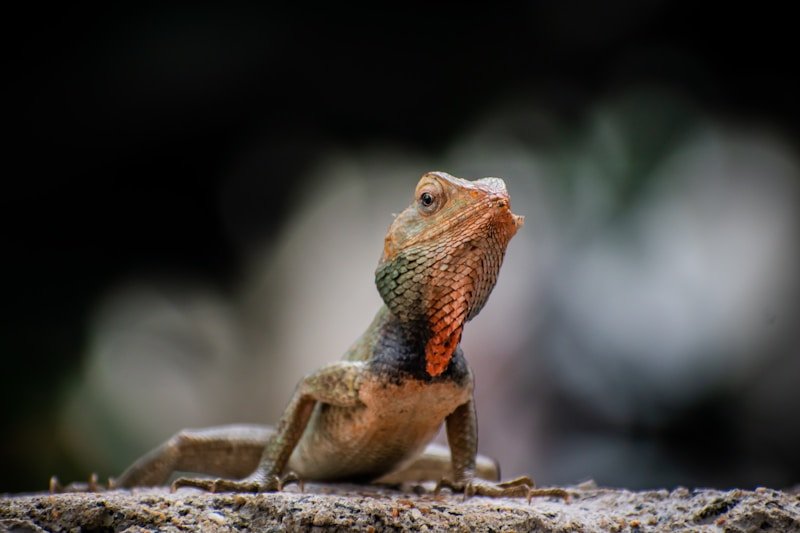Crocodiles are often regarded as living fossils, surviving for millions of years with few changes to their overall anatomy and behavior. These remarkable creatures have endured through the ages, witnessing the rise and fall of many species, including the dinosaurs. Despite their ancient origins, crocodiles remain one of the most successful predators on Earth today. In this article, we’ll explore the evolutionary history of crocodiles, their connection to dinosaurs, and the unique traits that allow them to thrive in modern ecosystems.
The Origins of Crocodiles
Crocodiles belong to the order Crocodylia, which includes alligators, caimans, and gharials. These reptiles have a history that stretches back over 200 million years, to the late Triassic period, a time when the first dinosaurs began to appear. The ancestors of modern crocodiles were part of a larger group of reptiles known as the Archosaursia, which also gave rise to dinosaurs and birds. Early crocodile-like reptiles were similar in appearance but significantly more diverse, occupying various ecological niches that ranged from land-dwelling creatures to semi-aquatic animals.
The first true crocodiles evolved around 95 million years ago during the Cretaceous period. These early crocs were more agile and diverse than the modern species we know today. While many of these ancient crocodiles became extinct at the end of the Cretaceous, a few species managed to survive the mass extinction event that wiped out the dinosaurs 66 million years ago. It’s this survival through one of the most catastrophic extinction events in history that has earned crocodiles the nickname “the last of the dinosaurs.”
Crocodiles and Dinosaurs: A Shared Ancestor
While crocodiles are often associated with dinosaurs due to their reptilian nature, it’s important to recognize the shared ancestry they have with them. Both crocodiles and dinosaurs descend from a common group of archosaurs, a branch of reptiles that dominated the Earth during the Mesozoic era. However, the paths of these two groups diverged long before the age of dinosaurs came to an end.
Crocodiles remained primarily aquatic, evolving into the powerful, ambush predators we see today. Meanwhile, dinosaurs diversified into numerous forms, from massive herbivores like the Brachiosaurus to the predatory Tyrannosaurus rex. One of the most interesting evolutionary links between crocodiles and dinosaurs is their similar body structure. Both groups share a similar skeletal structure, including a relatively low-to-the-ground stance, elongated snouts, and powerful jaws, all traits that are indicative of their shared archosaur lineage.
Interestingly, it’s believed that modern birds are the closest living relatives of the non-avian dinosaurs. While crocodiles and dinosaurs both share a common ancestor, birds, having evolved from theropod dinosaurs, are more directly linked to that group.
Adaptations That Help Crocodiles Survive
Crocodiles have undergone minimal change over the millions of years they have existed, and this evolutionary stability is a testament to their effectiveness as apex predators. One of the most notable adaptations of crocodiles is their powerful bite. Their jaws are capable of exerting immense pressure, which allows them to capture and subdue prey efficiently. Crocodiles have the strongest bite force of any animal in the world, measured at over 3,700 pounds per square inch (psi), far surpassing even the bite strength of large carnivorous dinosaurs.
Another key adaptation is their incredible ability to hold their breath for long periods. Crocodiles are able to dive underwater and remain submerged for up to an hour, a survival tactic that allows them to hunt, hide from threats, and regulate their body temperature. This ability to remain motionless for extended periods of time also makes crocodiles exceptional ambush predators, waiting patiently for prey to come close before launching a devastating attack.
Crocodiles also possess a unique vision adaptation: their eyes, ears, and nostrils are positioned on top of their heads, allowing them to remain almost completely submerged in water while still being able to see, hear, and smell their surroundings. This makes them incredibly effective hunters in their aquatic environments, where they can wait quietly for fish, birds, or other prey to approach.
The Future of Crocodiles in a Changing World
Despite their long history and remarkable adaptability, crocodiles are not immune to the challenges posed by modern environmental changes. Habitat loss, pollution, and climate change are all threats that impact crocodile populations worldwide. Coastal development and the draining of wetlands have significantly reduced their natural habitats, forcing some species into smaller, more fragmented regions. Pollution, particularly in the form of plastics and heavy metals, also poses significant risks to crocodile health and reproduction.
However, some species of crocodiles are benefiting from conservation efforts and are showing signs of recovery. For example, the saltwater crocodile, one of the largest living reptiles, has seen population increases in areas like Northern Australia, where conservation measures have been put in place to protect these apex predators. As top predators in their ecosystems, crocodiles play a crucial role in maintaining the balance of their habitats. Therefore, preserving their populations is not just important for the species themselves, but for the ecosystems they inhabit.
In conclusion, crocodiles are indeed living relics of a distant past, surviving through epochs of extinction, evolutionary change, and climatic shifts. Their ability to survive for millions of years despite their ancient lineage highlights just how well-adapted they are. As the “last of the dinosaurs,” crocodiles remind us of the resilience of life on Earth and the importance of conserving these living fossils for future generations.

